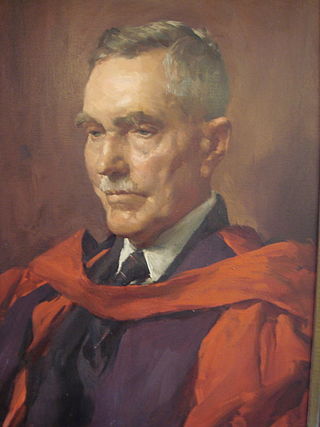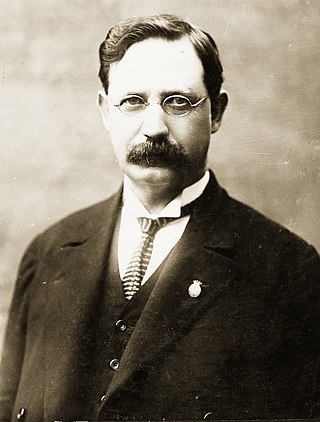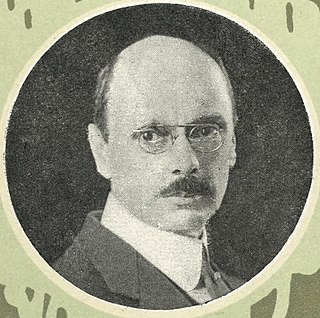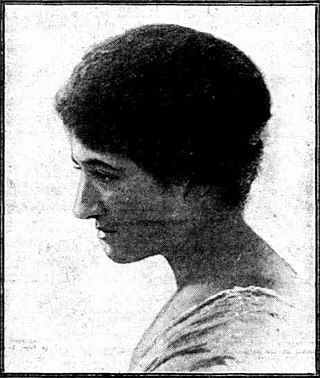Related Research Articles

The Courier-Mail is an Australian newspaper published in Brisbane. Owned by News Corp Australia, it is published daily from Monday to Saturday in tabloid format. Its editorial offices are located at Bowen Hills, in Brisbane's inner northern suburbs, and it is printed at Murarrie, in Brisbane's eastern suburbs. It is available for purchase both online and in paper form throughout Queensland, most regions of Northern New South Wales and parts of the Northern Territory.

Marie Adelaide Elizabeth Rayner Lowndes, who wrote as Marie Belloc Lowndes, was a prolific English novelist, and sister of author Hilaire Belloc.
The Amalgamated Press (AP) was a British newspaper and magazine publishing company founded by journalist and entrepreneur Alfred Harmsworth (1865–1922) in 1901, gathering his many publishing ventures together under one banner. At one point the largest publishing company in the world, AP employed writers such as Arthur Mee, John Alexander Hammerton, Edwy Searles Brooks, and Charles Hamilton. Its subsidiary, the Educational Book Company, published The Harmsworth Self-Educator, The Children's Encyclopædia, and Harmsworth's Universal Encyclopaedia. The company's newspapers included the Daily Mail, the Daily Mirror, The Evening News, The Observer, and The Times. At its height, AP published over 70 magazines and operated three large printing works and paper mills in South London.

John Villiers Farrow, KGCHS was an Australian film director, producer, and screenwriter. Spending a considerable amount of his career in the United States, in 1942 he was nominated for the Academy Award for Best Director for Wake Island, and in 1957 he won the Academy Award for Best Adapted Screenplay for Around the World in Eighty Days. He had seven children by his wife, actress Maureen O'Sullivan, including actress Mia Farrow.

Sir John Burton Cleland CBE was a renowned Australian naturalist, microbiologist, mycologist and ornithologist. He was Professor of Pathology at the University of Adelaide and was consulted on high-level police inquiries, such as the famous Taman Shud Case in 1948 and later. He also studied the transmission of dengue virus by the mosquito Stegomyia fasciata.

Frederick Johns was an American-born Australian journalist and biographer.

Metters was a brand of stoves and ovens made by Metters & Company, an Australian company established in Adelaide in 1891 by Frederick Metters (1858–1937), who patented and manufactured a number of kitchen appliances notably the 'top-fire' wood stoves. His brothers Charles Henry Metters and John Thomas Metters had earlier founded Metters Bros., making stoves and ovens in Melbourne. Production and distribution of Metters equipment was expanded from Adelaide to Perth, Western Australia, in 1894 where Fred Metters formed a partnership with Henry Spring (1864–1937), and then to Sydney, New South Wales in 1902. Spring bought out his partner in 1907 and founded Metters Limited in 1908 with himself as managing director, and greatly expanded the product range and volume of manufacture in Perth, Adelaide and Sydney.

Roland Pertwee was an English playwright, film and television screenwriter, director and actor. He was the father of Doctor Who actor Jon Pertwee and playwright and screenwriter Michael Pertwee. He was also the second cousin of actor Bill Pertwee and grandfather of actors Sean Pertwee and Dariel Pertwee.
The National Gallery of Victoria Art School, associated with the National Gallery of Victoria, was a private fine arts college founded in 1867 and was Australia's leading art school of 50 years.

George Howard Clutsam was an Australian pianist, composer and writer, best remembered as the arranger of Lilac Time. Clutsam published over 150 songs.
Francis Clark and Son was an engineering business in the early days of South Australia, which later became Francis Clark and Sons.
Henry Rymill and Frank Rymill were brothers prominent in business and public service in the 19th century South Australia. Henry "Harry" Rymill and Francis "Frank" Rymill were born in England, sons of Robert Rymill and Louisa Rymill of Shepperton, and migrated to South Australia, arriving at Port Adelaide in the Caucasian on 1 October 1855. Their company H & F Rymill was a prominent financial institution well into the 20th century. Their families included a number of prominent Adelaide citizens.

Henry Archdall Langley was an influential Irish-born Anglican priest, of considerable physical strength, who migrated to Australia in 1853, and became the first Bishop of Bendigo from 1902 until his death in 1906.
Thomas Arthur Lewis "Tad" Davy was a lawyer and Western Australian politician.
George Melrose was a Scottish pioneer of South Australia, whose descendants were prominent in pastoral and professional circles.

Winifred Kiek was the first woman to be ordained in the Christian Ministry in Australia. She was ordained on 13 June 1927 in South Australia to the Congregational Union of Australia.
The Hindmarsh Brewery was a brewery founded c.1844 in Hindmarsh, in the then colony of South Australia, by E. J. F. "Fred" Crawford. Crawford lost possession of the business in 1859, then re-established it on a different site before becoming bankrupt. It was then taken over by Henry Haussen and George Catchlove, and was successfully operated by them and their successors until 1927.
George Cockburn Henderson was an Australian academic with a considerable career in Adelaide.
John McKellar Stewart, generally referred to as J. McKellar Stewart, was professor of philosophy at the University of Adelaide and its vice-chancellor from 1945 to 1948.

Clara Serena Kleinschmidt was an Australian operatic contralto singer, professionally known as Clara Serena. She had a successful career in London and in Europe, which was interrupted by the World War I, and resumed in 1923 with Roy Mellish, her accompanist and husband. They retired to South Australia in 1951.
References
- ↑ Fiona Dixon. "News: Who's Who in Australia". State Library of Queensland . Retrieved 23 July 2022.
- ↑ Mark Peel and Janet McCalman, Who Went Where in Who's Who 1988: The Schooling of the Australian Elite, Melbourne University History Research Series Number 1, 1992
- ↑ "The Who's Who Series", at Connect.web
- ↑ Edgar, Suzanne (1983). "Johns, Frederick (Fred) (1868–1932)". Australian Dictionary of Biography . Vol. 9. National Centre of Biography, Australian National University. ISSN 1833-7538.
- ↑ "Fred Johns Scholarship". The Advertiser . Adelaide, South Australia. 23 November 1933. p. 16. Retrieved 26 July 2019– via National Library of Australia.
- ↑ Who's Who in Australia (electronic resource) at National Library of Australia
- ↑ ConnectWeb home page
- ↑ Gideon Haigh (23 July 2022). "Who's Who in Australia latest victim of our digital times" . The Weekend Australian . p. 6.
- ↑ "Johns, Fred, 1868–1932", holdings at National Library of Australia
- ↑ "Who's Who in Australia, National Library of Australia